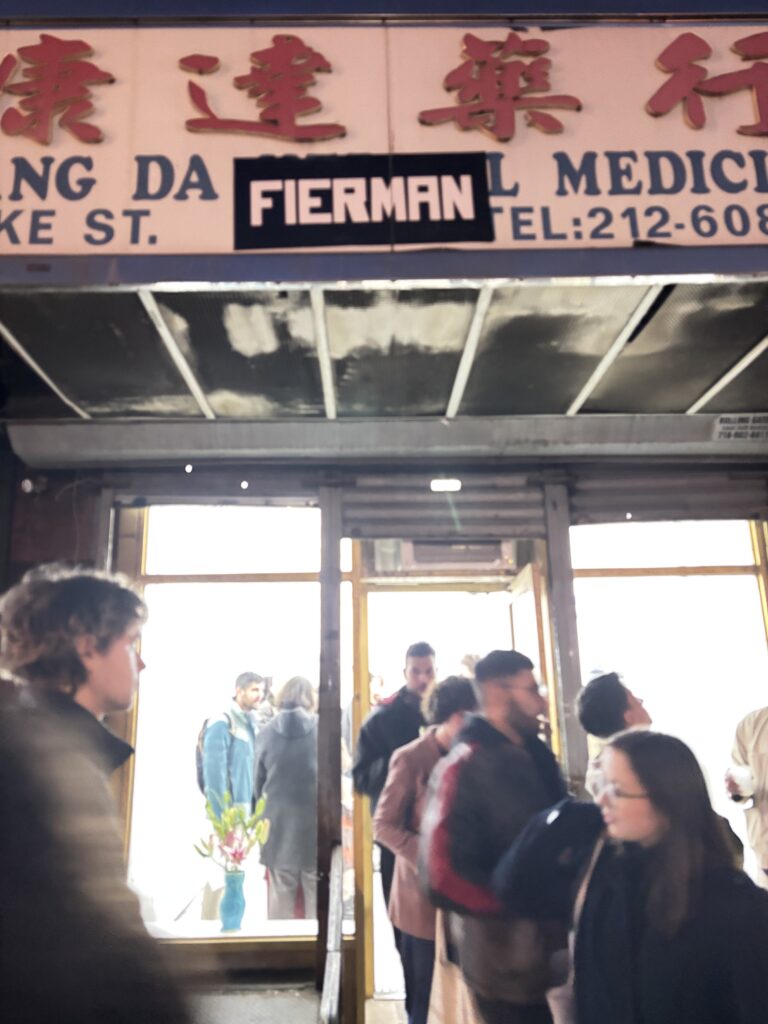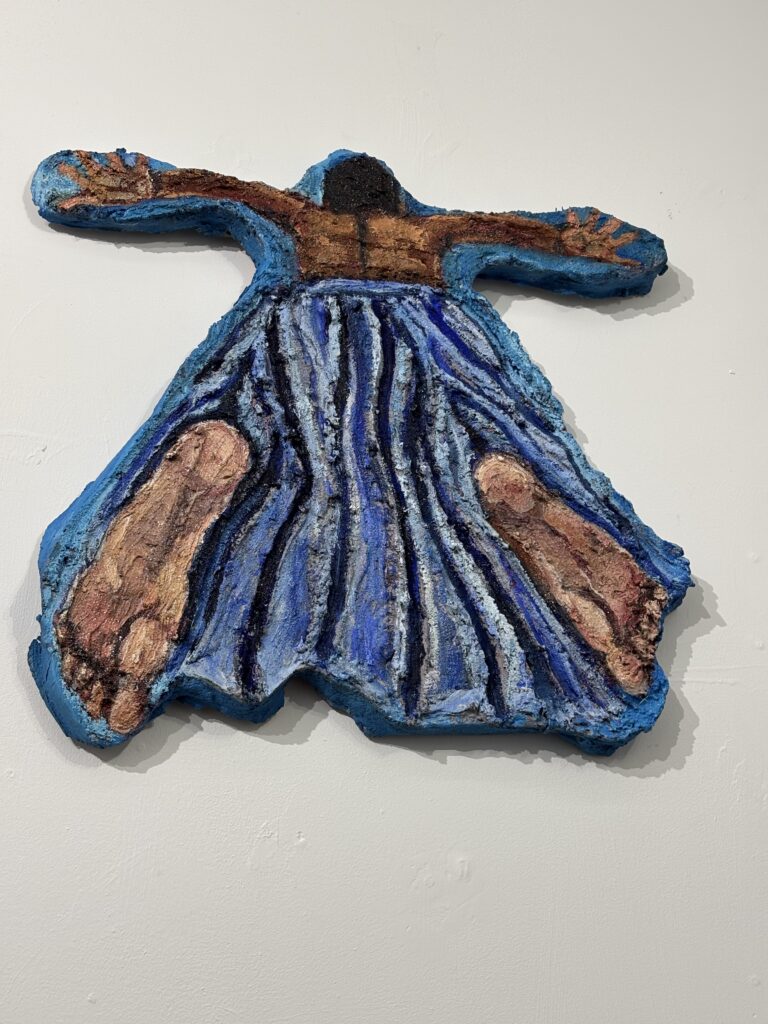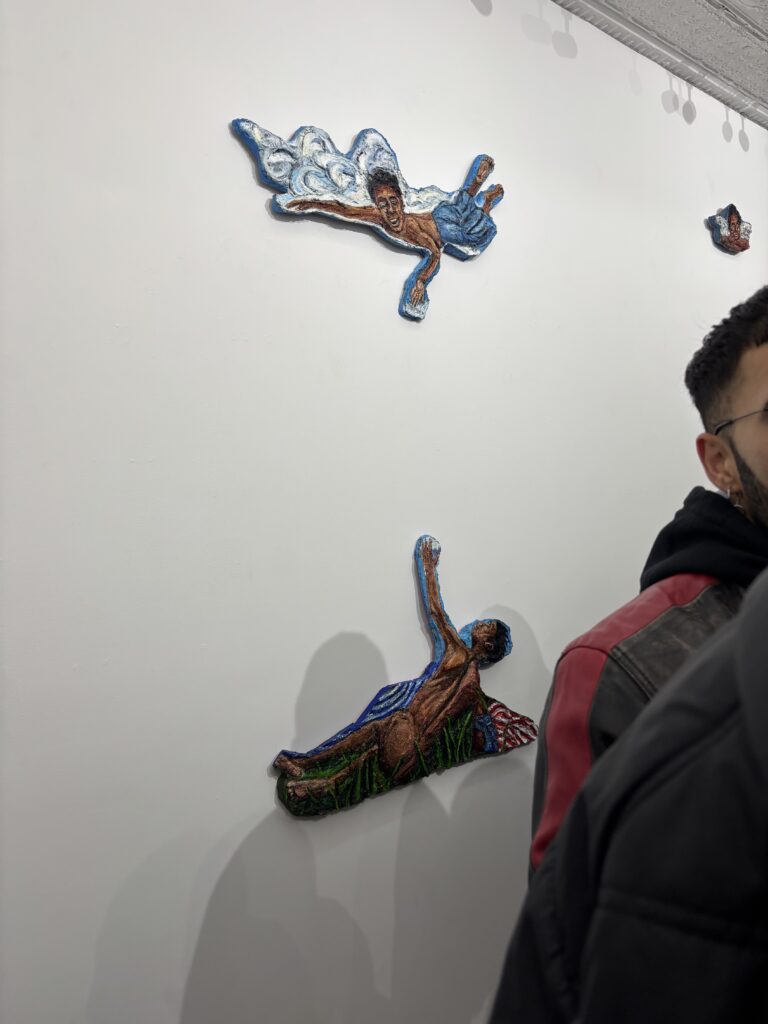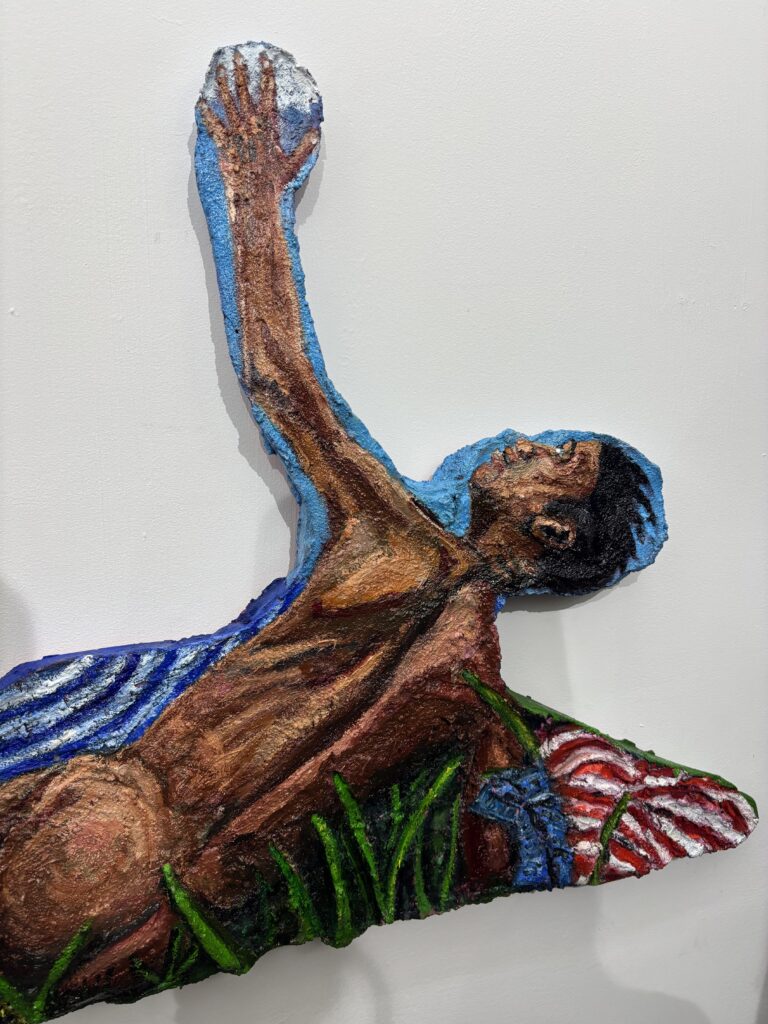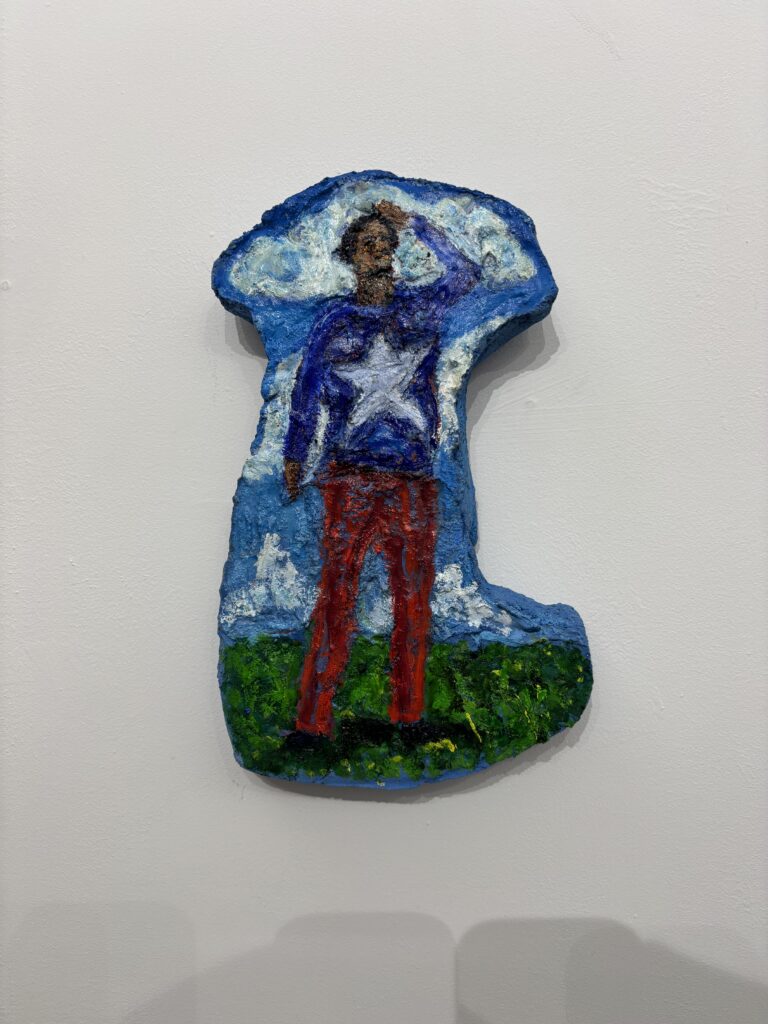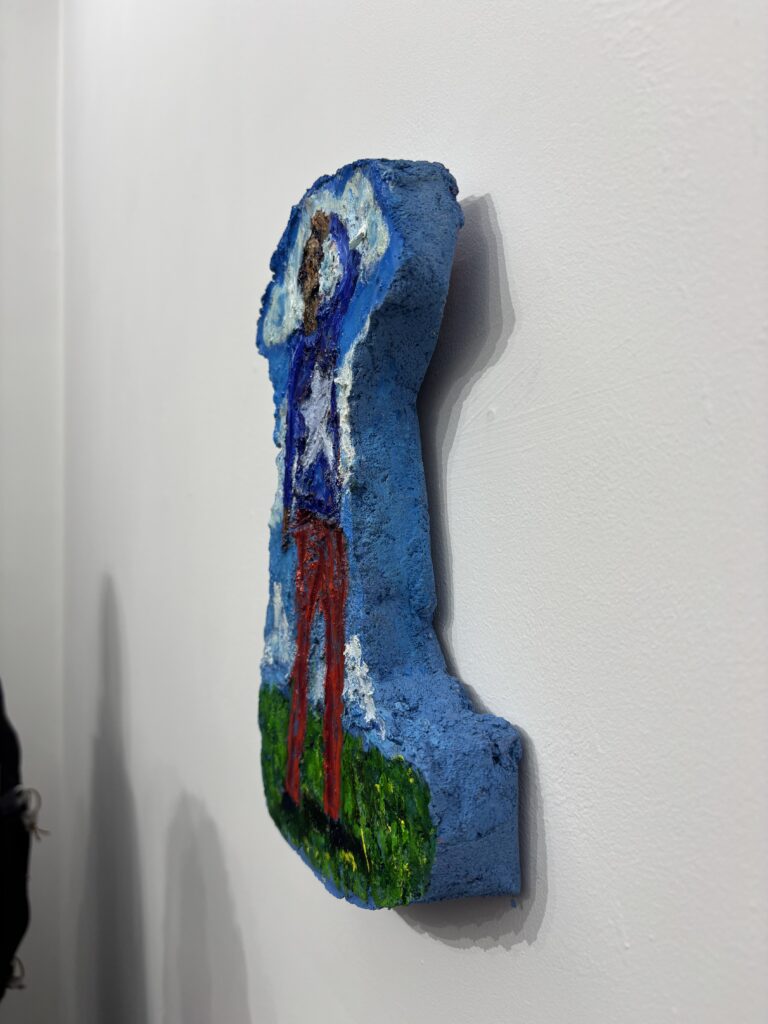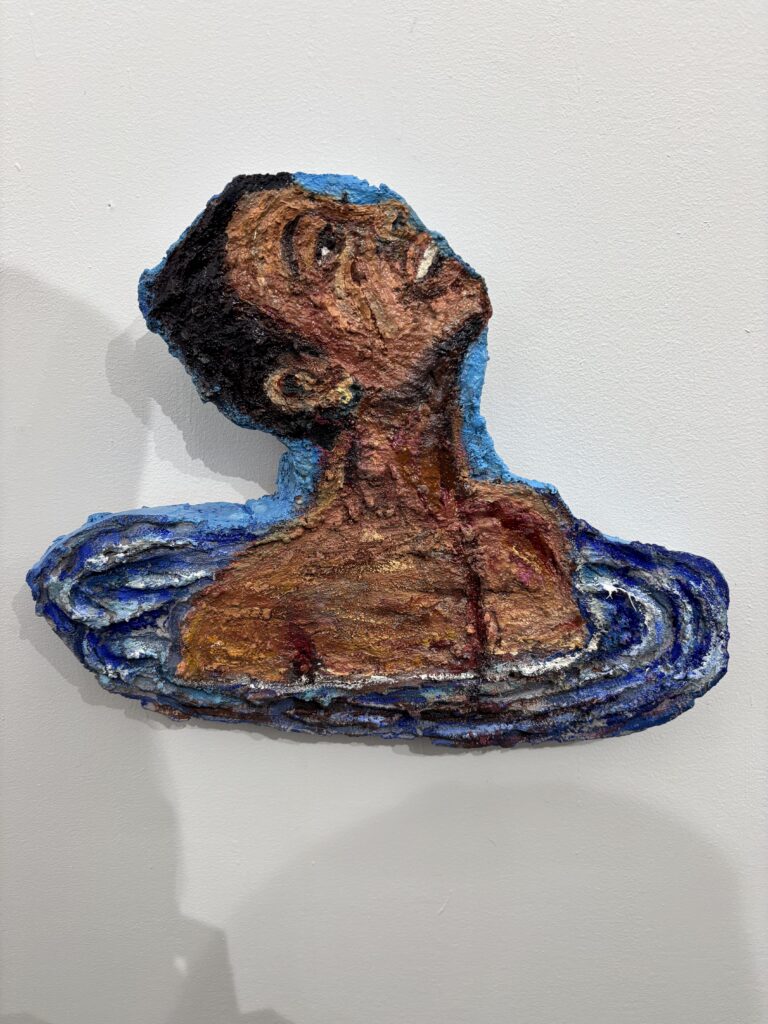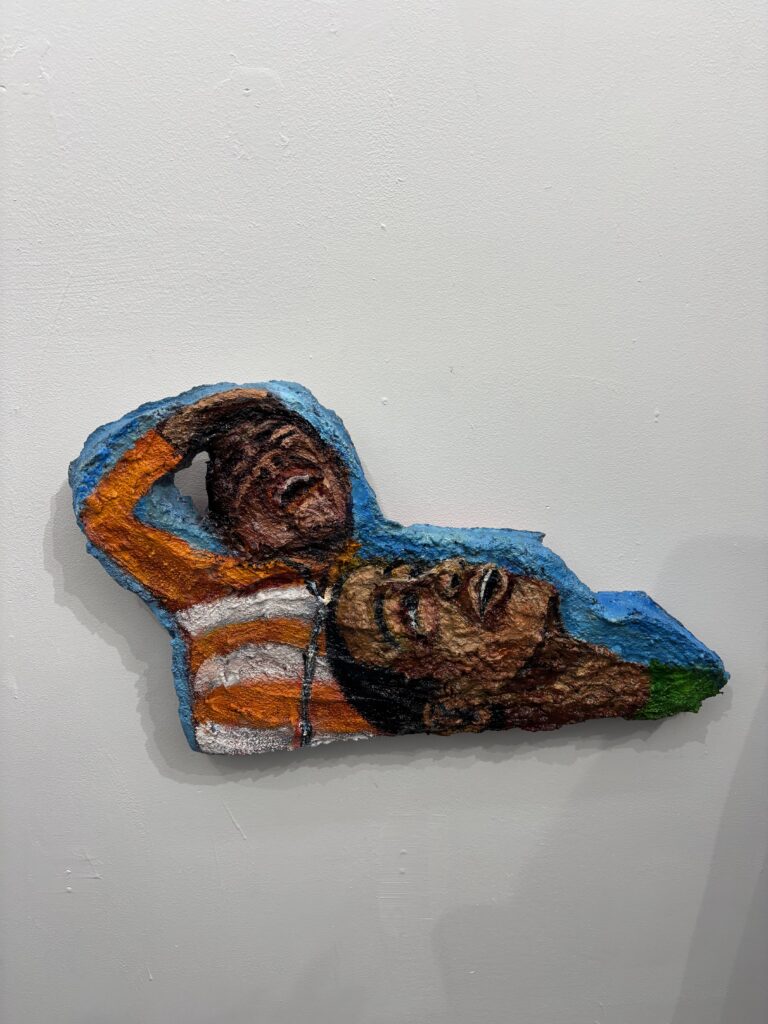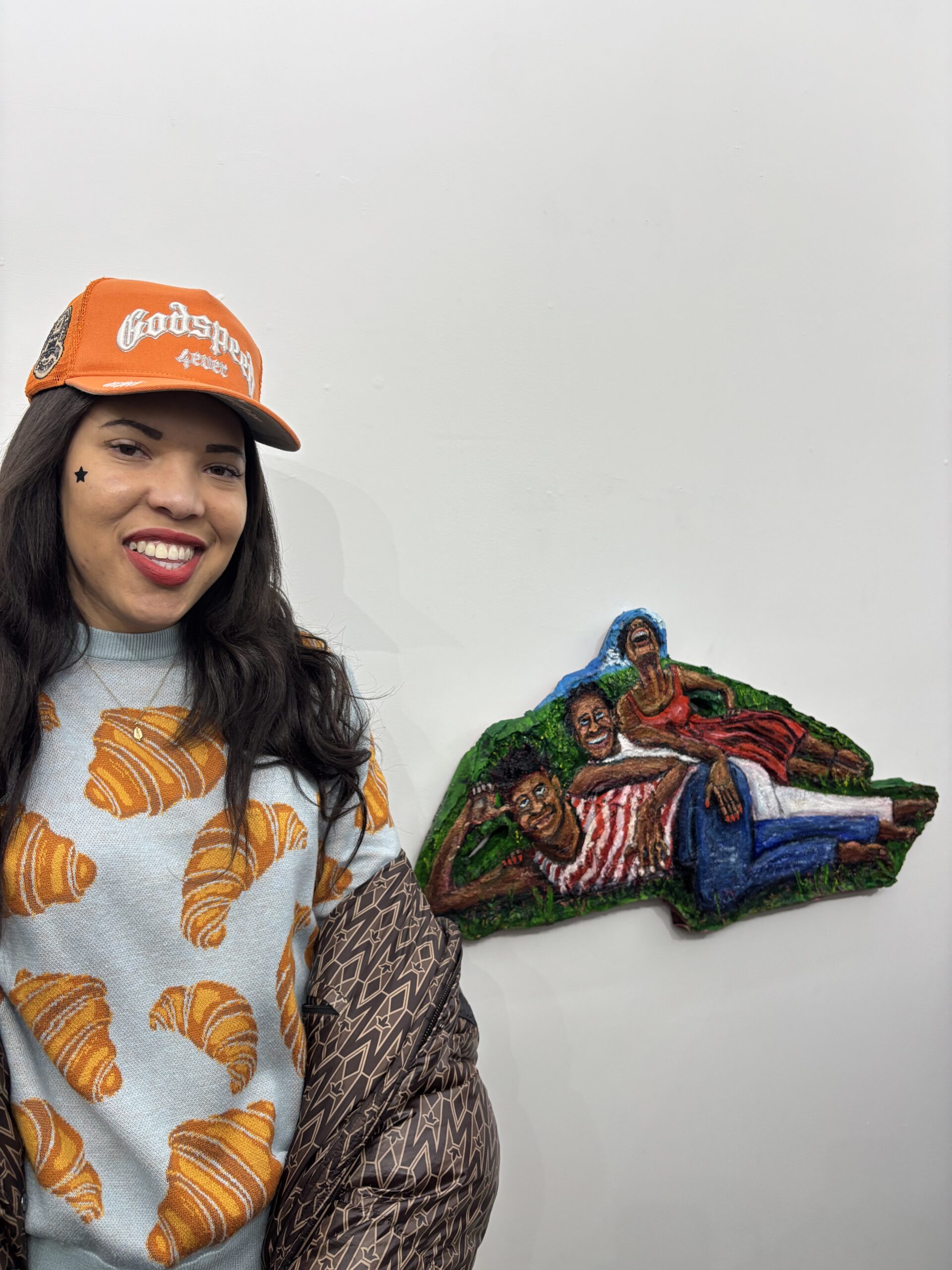
Jarrett Key “Above and Beyond” Opening Reception
At first, we thought they’d been painted on wood. We’re used to connecting uneven texture and rough edges to driftwood, reclaimed furniture, found objects. Rosa and I looked at the irregular outlines and asked each other what came first: did the painted figures dictate the carved shapes or did the shapes determine the vision? It turned out neither choice was correct; there’s no wood at all. It’s concrete, the same as the rough textured and uneven streets we walked on to arrive at the Fierman gallery.
It’s hard to see the similarities between the sidewalks and Key’s art when the colors of the oil pigment fresco obscure the gray, and chunks of the stone we use to build walls are hanging from the wall itself. Concrete is heavy; these figures float on the breeze. The Black obsession with flying has long been revealed in spirituals, which Key — born in Alabama — notes as an inspiration. One glad morning when this life is over, I’ll fly away. I’m going up yonder. I’m going to my home up in the sky. There are hours of work songs, slave songs, and Negro spirituals that dream out loud of freedom somewhere off this plane. “Before Yesterday We Could Fly” is a line from the Flying African folktale (attributed to a retelling by Virginia Hamilton and the name of the Afrofuturist period room at the Met) that offers further proof. Most of Key’s cement frescoes show us airborne: floating, flying, and looking down in love. Many of the other pieces show us looking up with hope. One day we’ll all be free.
In Key’s Above and Beyond, there are just twelve pieces along the gallery’s three walls and the white space between them is intentional. While each work has an individual name (and price tag) the entire gallery can be interpreted as a triptych, a 3 paneled artwork. The release encourages that “the installation implicates the viewer to fill in the field embedding the figures.” In other words, you get to imagine the relationship between the pieces that share panels. On some walls it is easier than others to write your own story. In Come With Me, a shirtless young man in flight reaches toward the Earth. He’s placed above Take Me With You, in which a nude man lies prone on a verdant base reaching skyward. As in Michaelangelo’s The Creation of Adam they’re just out of reach of one another but an eventual (or previous) connection is implied. The white space on the walls is also reminiscent of Barkley Hendricks’ white era. In that series, Hendricks paints Black figures in white outfits on white backgrounds. He liked the look of them bobbing untethered in white space, liked the freedom it implies. The same idea is useful here. The airborne are free. The earthbound are biding their time.
The work that drew me to the show was Flying Away and the piece calls out even louder in person. On Instagram I couldn’t make sense of the medium, the colors looked thick and soft like fiber art. The scale, too, was unclear. In the gallery, Flying Away was the focal point centered at the top of the middle panel. Even at the well-attended reception it was the first thing I saw when I opened the glass door to the gallery. Like the others, it’s a cement fresco, but it’s placed in the immediate past tense. This beloved is going, going, gone. The figure is en route, we can see only their arms outstretched in anticipation and the soles of their feet in departure. The perspective narrows (the feet are wider than the head) and it feels like they’re zooming into the wall, seconds away from being a blip on the horizon. I imagine an expression of pure bliss, but we can’t see a face here. Their number has been called, they’ve passed us by. Some of the works like Madear Looking Down and a pair of cherubs imply themes of afterlife and ether, but we don’t know if the flying folks have been liberated on a physical level or a spiritual one. They may still be alive, just untethered to the demands of this paradigm.
After all, Toni Morrison suggests that death is not the only escape, freedom can be ours if we make ourselves free. The release for the collection begins with a Morrison quote from her 1977 novel Song of Solomon, “if you want to fly, you have to give up the things that weigh you down.” No one in Morrison’s tragic story learns to fly and everyone who tries not only fails, but dies. The nonstop yap of the TV news wraps anchors around my ankles, but if Key can make concrete fly there may still be hope. Untether, unburden, the glad morning comes.
“Above and Beyond” by Jarrett Key is on view at Fierman (19 Pike Street) until May 4, 2025. Entry to the gallery is free. All works are available for purchase.
You can watch a highlight video of this event on TikTok here.
- Fierman Gallery Exterior
- “Flying Away (Going Home)” by Jarrett Key (2025)
- Jarrett Key ‘Above and Beyond’ Opening Reception
- “Take Me with You” by Jarrett Key (2025)
- “Star Among Skies” by Jarrett Key (2025)
- “Star Among Skies” [side detail] by Jarrett Key (2025)
- “Wading (Baptism)” by Jarrett Key (2025)
- “We Were There” by Jarrett Key (2025)


